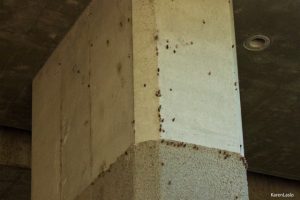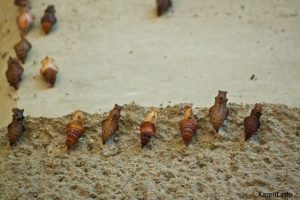by Karen Laslo
If you can’t find what you’re looking for, take a look at what you’ve got. The black and red-dotted caterpillar phase of the Pipevine Swallowtail butterfly sets a good example of this parable for humans.

Normally, in a more natural setting, the caterpillars attach themselves to rocks or trees. But in lower Bidwell Park’s recent freeway construction site, these familiar objects have been stripped away. In the absence of the customary, the caterpillars must improvise.


They do so by hauling themselves up the sides of the concrete freeway supports where they attach and weave a protective, hard shell around themselves.
This phase of the Pipevine Swallowtail is the “chrysalis.” Don Miller, professor of entomology at CSU Chico, says, “Many will emerge next spring, although some may wait another year.”

